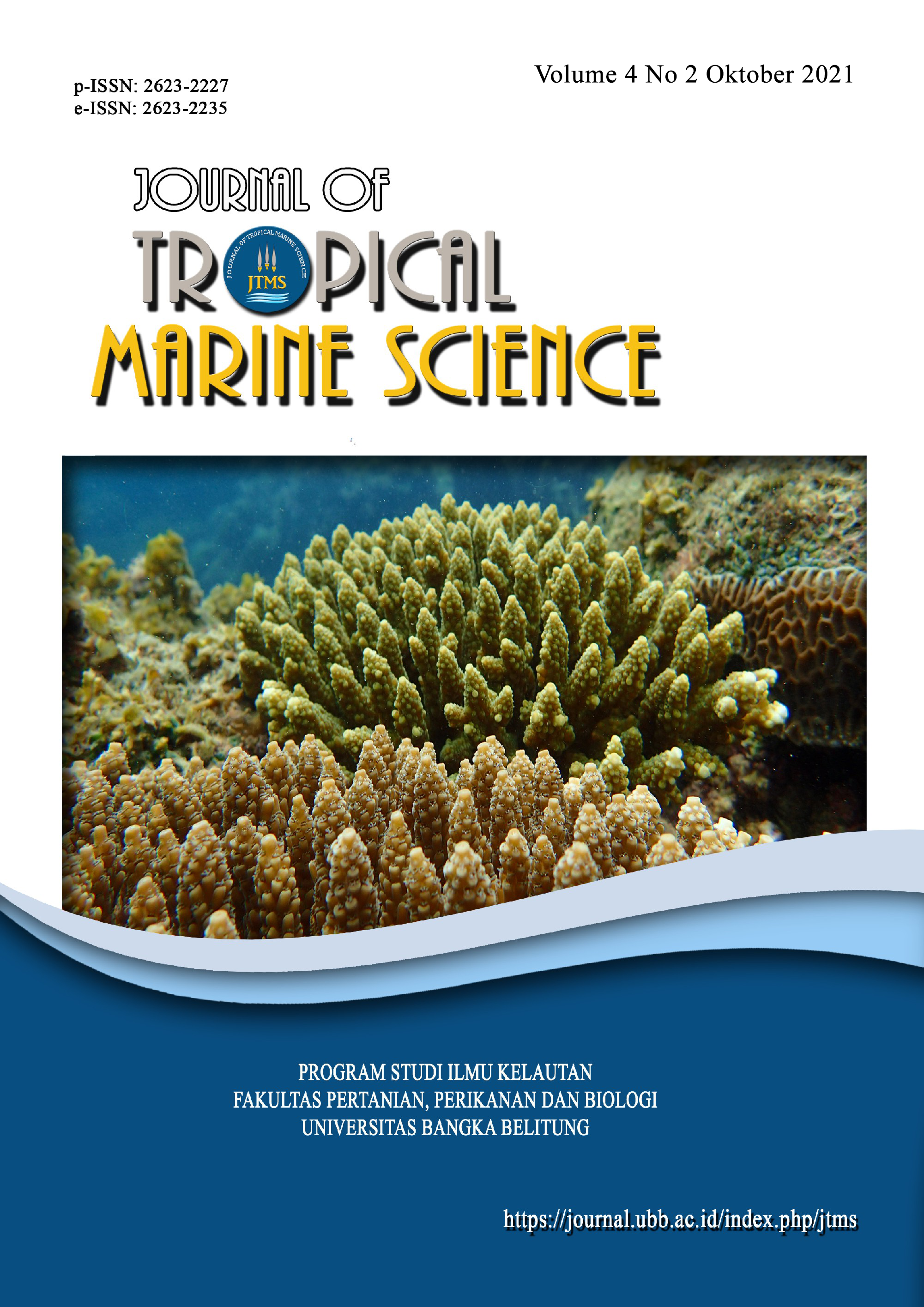Evaluation of Water Hyacinth (Eichhornia crassipes) potention as Fitoremidiator of Tofu Liquid Waste in Household Scale
DOI:
https://doi.org/10.33019/jour.trop.mar.sci.v4i2.2353Keywords:
Tofu, Nitrate, pH, Colour, Odour, Waste water, ExperimentAbstract
The untreated liquid waste produced from the Tofu industry may pollute the water environment. Phytoremediation may be an alternative method to reduce the contaminant produced. For that reason, the study aimed to analyze the characteristic of tofu liquid waste and analyze the effectiveness of water hyacinth in improving tofu liquid waste quality (nitrate, pH, colour, odour) from the household-scale industry. This research used the 50 gram of water hyacinth for one litter of liquid waste in the experimental test of phytoremediation with three replication. The nitrate concentration, pH, colour and odour was analyzed before and after treatment (the day 5th, 10th and 15th). The result showed the initial characteristic of liquid waste was above the level 4 of water quality standard according to PP RI No.82 in the year 2001 (N 444 mg/l, pH 4,15, colour 1831 Pt-Co, with strong odour). The study proved that water hyacinth was potential to improve tofu liquid waste quality. Nitrate concentration decreases from initial value up to 94%, the value of pH became neutral in ranged of 7, and liquid waste became more transparent found with no strong odour after treatment. It concluded that water hyacinth has a high potential as phytoremediator. Further research should use the other design with other aquatic plant species to improve liquid waste of tofu in the household scale.Downloads
Download data is not yet available.
Downloads
Published
2021-05-11
Issue
Section
Articles



